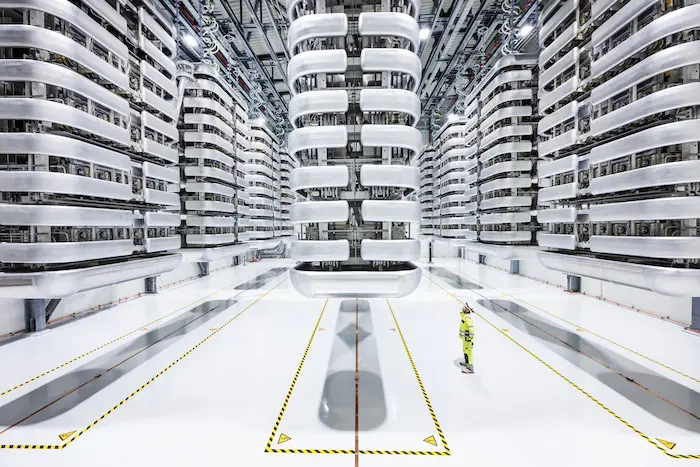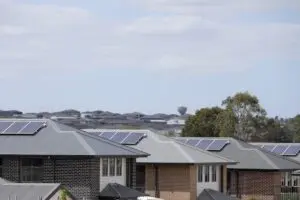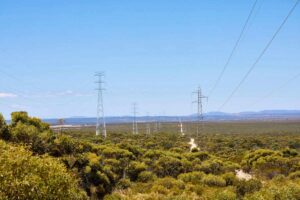Hitachi Energy is set to supply the technology for the the enormous converter sheds that will bookend the 345 kms long cable in the controversial Marinus Link from Tasmania to the mainland.
One station will sit on the coast at Heybridge in Tasmania and the other will be sited at Hazelwood in Victoria, converting grid AC electricity to the DC power that will be transferred along the HVDC (high voltage direct current) line.
The cable itself is being supplied by Italian telecom cable systems giant Prysmian Powerlink, which will run under the Bass Strait sea and once it reaches the coast will travel 90kms underground to the Latrobe Valley.
Marinus Link CEO Caroline Wykamp says the contract is another important step to ensure delivery of the project by the end of the decade. She noted Marinus Link is a cornerstone project of the Australian government’s Rewiring the Nation Plan and is classified as urgent in the Australian Energy Market Operator’s national energy plan.
HVDC cables allow large volumes of electricity to be sent over long distances with minimal losses – the longer the distance, the cheaper it becomes in comparison to HVAC. DC power also doesn’t see voltage fluctuations as AC does, so lower voltage cables can be used which are better insulated and reduce losses in along the line.
But the technology also costs more and the need for conversion stations at each end of the cable adds complexity and expense, and energy is lost in the process.
Hitachi says its converter technology, which looks like its straight out of a science fiction film, reduces losses at either end from 5-10 per cent to 2-3 per cent.
The Marinus Link project was originally conceived to ‘unlock’ Tasmania’s battery-like hydro power and share it with the mainland, while also decanting some of the excess daytime solar and wind power in Victoria.
But with Tasmania’s own solar and wind energy assets multiplying and the high cost of rolling out undersea HVDC cables from an island that didn’t need supplemental electricity generation, has become a major sticking point.
The project was effectively given the green light in December when the Australian Energy Regulator published a determination allowing it to recover the costs for designing and planning the 750MW undersea cable through to a final investment decision.
It approved an initial budget of $196.5 million.
But the cost to Tasmania saw the state government threaten to pull out entirely last year.
The federal government stepped in and the project were behind the project being cut in half, from the original dual-cable 1500MW proposal to a single 750 MW cable, after the national and state governments struck a deal in September. The door is open in future to upgrade to a second cable if necessary.
At the time Tasmania Premier Jeremy Rockcliff revealed that even though it had been halved, the link was going to cost the same or slightly more – $3-3.3 billion – as the original proposal.
Marinus was also in the gunsights of Tasmanian Labor in February, which threatened to mothball the project entirely if it won the State election the following month. The incumbent Liberal party won the election and Labor has promised to back it on energy policy.
In March, the federal government bought a stake in the project to ensure it goes ahead, taking up 49 per cent, with Victoria’s stake at 33.3 per cent and Tasmania reduced to 17.7 per cent.
From today, the next major milestones for the Marinus Link project include submitting environmental approvals documentation, execution of contracts for HVDC cable and civil works, and submission of a revenue proposal for construction costs.
A spokesperson for Marinus Link told Renew Economy that the project will follow similar specifications to the Viking Link interconnector in Europe: cables will be buried up to 1.5 metres below the surface and farming will be allowed to take place above them.










